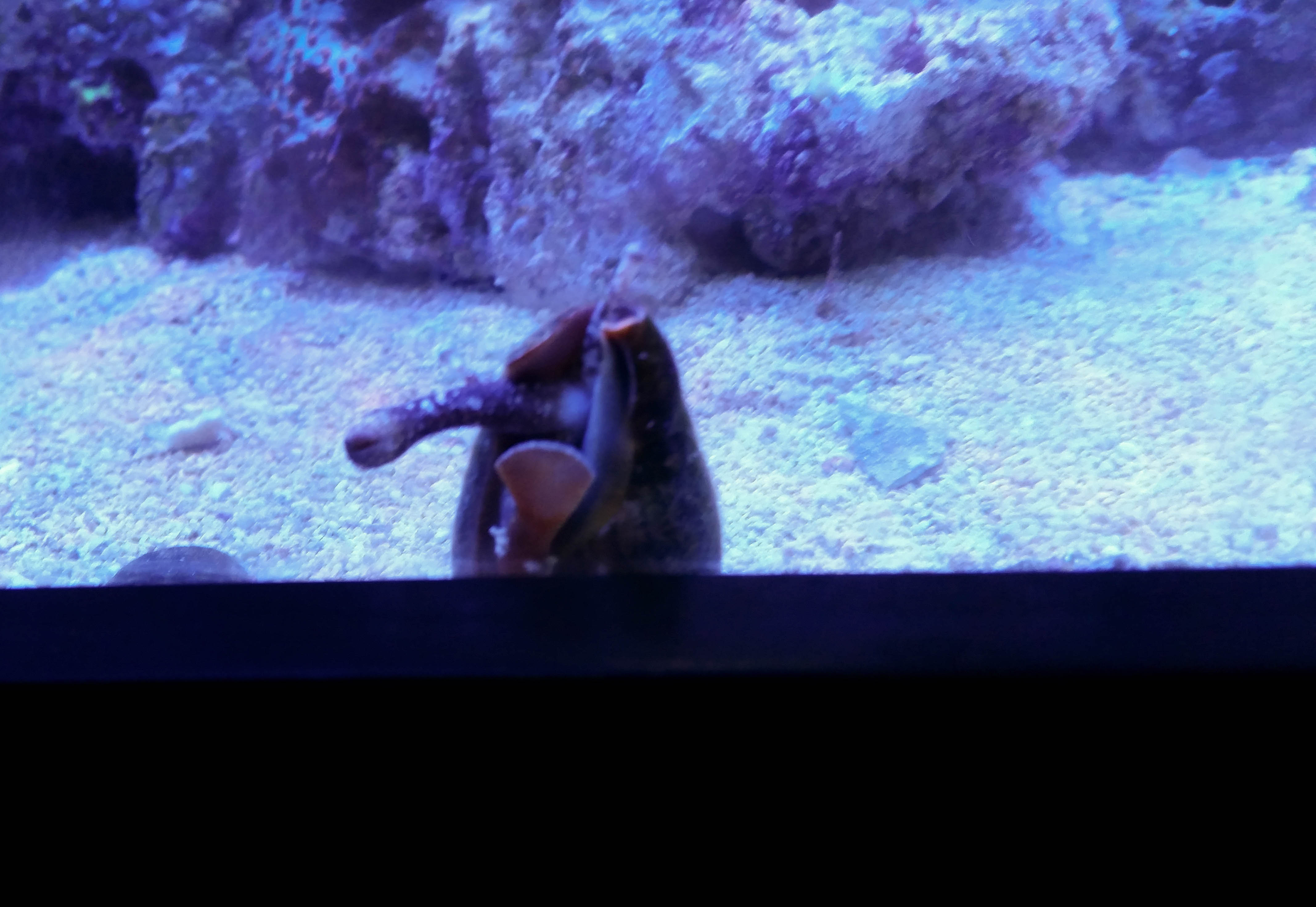melypr1985
totally addicted
View BadgesExcellence Award
Expert Contributor
Article Contributor
Moderator Emeritus
Invert Spotlight: Conch
The conch is an excellent addition to your clean up crew. They are touted for their skills at cleaning and sifting through your sand bed keeping it healthy and white. Conchs in general are quite hardy and easy to keep in any size tank, though only one should be kept in smaller systems and feeding them directly would be good to do on occasion. There are several species that you will find in the aquarium trade. Three in particular will be focused on here: The Spider Conch, The Tiger Conch and the Fighting Conch. All of these are common in the hobby.
Photo by: saltyfilmfolks
These conchs do not belong to the giant conch shells you find for sale in every beach-side store that ever existed. They are much smaller, but just as cool. They are reef safe and mostly omnivores that will feed on detritus found in the sand bed. They don’t travel on the rocks and won’t bother the corals that are on the sand bed. In an ideal situation, you would keep them with a deep sand bed full of flora and fauna for them to feed on and sift through. Conchs will keep that deep sand bed aerated and clean and lessen the need to supplement their diet. If kept in a smaller aquarium or in a newer tank with a smaller sand bed, then supplemental feedings of nori or frozen foods will work nicely to keep them from starving themselves out of the tank. All three of the conchs listed here are peaceful to tankmates and can fall prey to hermit crabs in the tank that are looking for a bigger home to steal.
The Spider Conch
The largest of the three conchs we are looking at today. The spider conch maxes out at almost a foot in shell length but averages a – still impressive- 7 inches when full grown. In the wild, these sea snails are found in shallow waters like tidal areas or areas of rubble around coral up to about 5 meters of depth. They can also be found in mangrove flats feeding mainly on algae. This species is almost solely a herbivore and will likely need supplementation of veggies if added into a new or small tank. This conch has a large, heavy shell with finger-like protrusions on the edge that can be used to identify males from females in some cases. The males have shorter, stumpier protrusions than the females tend to have toward the posterior end of the shell.
Photo by: Clayalaleona
The Tiger Conch
The Tiger Conch is one of the most readily available conchs in the hobby. They are peaceful, coral and fish safe and do a great job of cleaning and aerating the sand bed. There isn’t a lot of information out there on this conch and what is there is pretty conflicting. Some say the minimum tank size for this conch can be anywhere from 25 gallons to 55 gallons. Since this conch can get to a size of about 4 inches and eats mostly algae and micro flora from the sand bed, I would advise a tank of 55 gallons or larger for it. Older tanks are going to have more food available for these creatures, so in a tank that is less than two years old, these conchs may need dietary supplementation in the form of nori or pellet food.
Photo by: TRPlacek
The Fighting Conch
The fighting conch can be found from Florida, through the Caribbean and on to Brazil. They are common in the hobby and quite peaceful despite the name. They stay quite small compared to the other two conchs we have looked at, around 3 inches. Though, like the other two they are mainly herbivores that need a steady supply of algae to feed on. They will eat leftover foods and detritus found on the sand bed, but they are capable to starving themselves out of the tank if it’s a new or small tank.
Photo by: shornik
All of these conchs have a solid, heavy shell that grows with the snail. The shell grows by continuing to wrap around the snail creating a whirl or spiral at the anterior end of the shell. They move by using a very strong “foot” with a small paddle-like appendage that can reach forward, dig into the sand and propel it forward. They are quite hardy but need plenty of algae and plant matter to feed on or else they can starve themselves out of the tank. Conchs in general have two eyes that are at the end of long “arms”. They are independent of each other and are able to be retracted back into the shell and safety. The mouth, especially on the tiger conch, is a long tube appendage that can resemble a vacuum cleaner wand or the trunk of an elephant (on a much smaller scale of course). The mouth can be extended out from the shell and body to explore and eat without expending the energy to move the entire shell unless there is more food further away. It can also use its mouth to dig into the sand bed and find yummy flora to feed on at the same time as aerating the sand and turning it over.
These are pretty awesome creatures that make a great addition to your clean up crew. They can be kept in smaller tanks, but if they are to be kept for a long time supplemental feeding will probably be needed to keep them healthy and growing. Keeping your sand clean, being generally interesting and not bothering any of your fish or corals. Sounds like the perfect addition to a reef tank in my opinion.



















